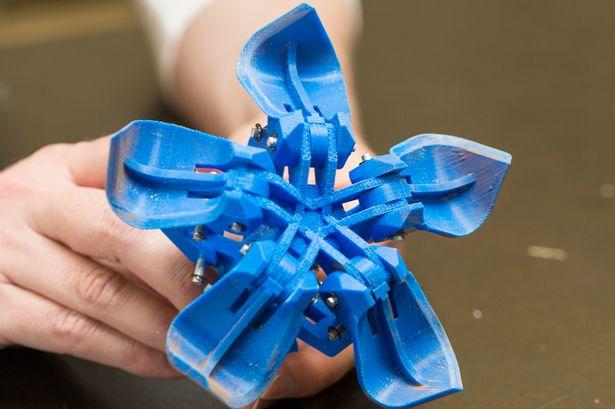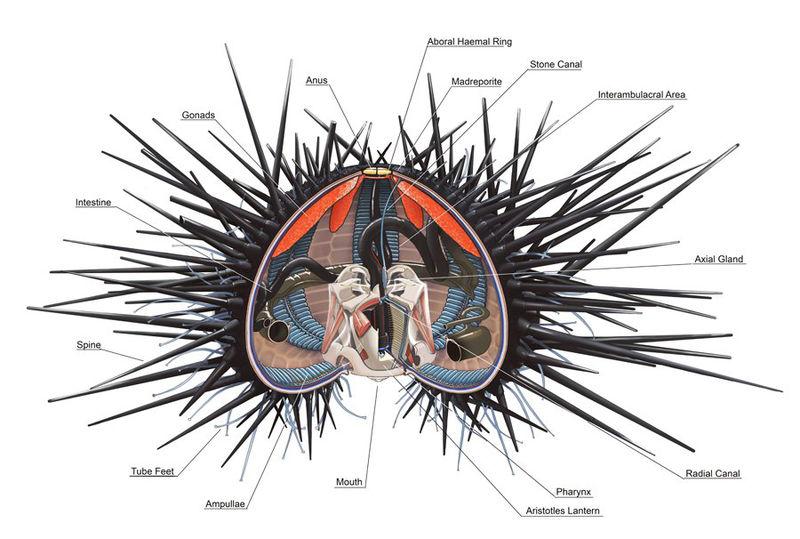But if engineers and marine biologists at the University of California have anything to do with it, you just might start to see headlines indicating the power of the sea urchin to assist in the exploration of Mars. No, they are not crafting tiny, round suits to send the spiny species into space. Instead, the group of researches is looking at the way in which the mouth of the sea urchin functions in order to create a better boring device that could potentially be attached to a small remote-controlled rover sent out through the vast expanses between planets to explore the surface of Mars.
The sea urchin is a hardy creature that thrives in a continuously shifting watery environment and uses its specialized mouth to both carve out protective niches in rocks and to eat. Their mouths contain five triangular teeth arrayed radially, somewhat akin to the claw in the prize-grabbing arcade game – although unlike the game claw, these mouths actually function. Ideally, mini rovers equipped with such a mouth could be deployed from a larger rover to collect samples with great accuracy and less local disturbance than the current shovel type collection devices used by NASA.
Sea urchins, more affectionately known as hedgehogs of the sea, lend themselves to contemplation of outer space as their construction looks more like that of a high-end, albeit evil, interstellar travel device, but that doesn’t mean that the transference of its mouth technology to sample collector was immediately apparent. The team that worked to develop this working claw went through a great deal of study and multiple iterations before arriving at a successful 3D printed interpretation.
Before construction of the claw could begin, the team carefully examined the mouth pieces of a local pink sea urchin (Strongylocentrotus fragilis), scanned them with 3D microscopes, and created a digital model of that geometry. The primary apparent area for focus was on the shape and relationship of the individual teeth. However, the team soon discovered that there was more to the creation of this mini-maw than its teeth.It wasn’t until the researchers revisited the way in which the teeth connected to the device that they discovered the key to creating a successful sampler. So far the device has performed well in tests, scooping up beach sand as well as soil that simulates the density and moisture level of the soil on Mars. Using 3D print technology, the team was able to design, experiment, and prototype in a rapid succession to arrive at a highly functional device that they hope will be of interest to NASA. The full study has been published in the Journal of Visualized Experiments. How do you think technology can learn further from mimicking nature? Discuss in the 3D Printed Urchin Claw forum over at 3DPB.com.
[Source: Mirror]Subscribe to Our Email Newsletter
Stay up-to-date on all the latest news from the 3D printing industry and receive information and offers from third party vendors.
Print Services
Upload your 3D Models and get them printed quickly and efficiently.
You May Also Like
The Dental Additive Manufacturing Market Could Nearly Double by 2033, According to AM Research
According to an AM Research report from 2024, the medical device industry, specifically in dentistry, prosthetics, and audiology, is expected to see significant growth as these segments continue to benefit from...
Heating Up: 3D Systems’ Scott Green Discusses 3D Printing’s Potential in the Data Center Industry
The relentless rise of NVIDIA, the steadily increasing pledges of major private and public investments in national infrastructure projects around the world, and the general cultural obsession with AI have...
AM Research Webinar Explores Continuum’s Sustainable Metal Additive Manufacturing Powders
Metal additive manufacturing (AM) powder supplier Continuum Powders is working to develop solutions that empower industries to reduce waste and optimize their resources. An independent life cycle assessment (LCA) of...
3D Printed Footwear Startup Koobz Lands $7.2M in Seed Round
California-based Koobz is focused on reshoring the U.S. footwear supply chain with advanced manufacturing processes, including 3D printing. The startup just announced that it has added $6 million to its...



































